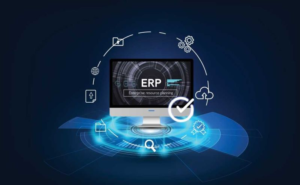The COVID-19 pandemic has challenged, and also changed the world in unimaginable ways. Just like people who are still having a tough time coping with the altered reality, businesses have suffered no less. From offices to stores shutting down completely to big and small businesses trying their best to stay afloat by shifting their business model online, everyone and everything has had to hit the reset button. Speaking of, the nexus between technology and automation has acted as a silver lining for businesses in these dark times. Accounting activities have moved base online, and they are poised to stay there for a long time. We at Rockford Computers LLC are always on our toes trying to integrate the latest tools and technologies in accounting software so that our clients are accounting routines are at par with global accounting trends and practices. In this blog, we are to give you a quick rundown of some of the trends that are going to take your accounts to the next level in 2021.
Cloud Accounting
Cloud accounting has gained much prominence since 2020, and its popularity is expected to surge to greater highs as working remotely gathers more favor among companies around the world. A survey by FinancesOnline revealed that more than 65 percent of accounting professionals conceded that cloud accounting is good news for businesses of all sizes. What’s more, over 55 percent of respondents unanimously opined that their businesses have already adopted cloud accounting. The main USPs of cloud accounting is security, accessibility, and easy integration.
Role of Automation
Automation in machines has augmented the quality of operations and efficiency levels. Accounting software is installed with different sets of modules that enable users to enjoy an improved user experience when they are engaged in accomplishing accounting tasks. Tasks like invoice processing, payroll processing, account auditing, etc, can be accomplished in a jiffy. Not just that, accounting software is also equipped with features that support resource management, reduce error-rate, improve productivity, and lower operational costs.
Data Analytics
You could call it a prophecy or coincidence but in 2004 Walmart had conducted a vast data analysis that showed what their customers would purchase and hoard when a climatic calamity occurs. The results led them to stockpile beers and strawberry pop-tarts. The surplus inventory was a sellout, and Walmart grabbed heavy profits, eventually. Since then the retail giant and many other industries have adopted data analytics to study and predict customers’ behaviors and buying preferences to help make informed business decisions and improve organizational economy and efficiency.
Cut to the present in 2021, data analytics has emerged as a prosperous offshoot of IT. More and more companies have been embracing data analytics and leaning on the results to drive business decisions and outcomes. In the accounting context, an accounting professional can use data analytics to monitor clients’ accounts, transactional behaviors, etc, to ensure that clients’ are adhering to compliance policies and corporate norms.



